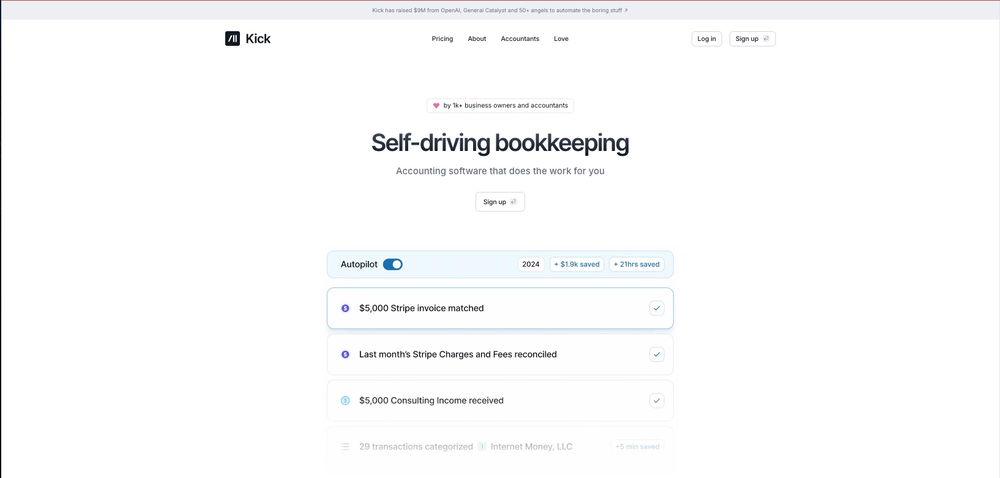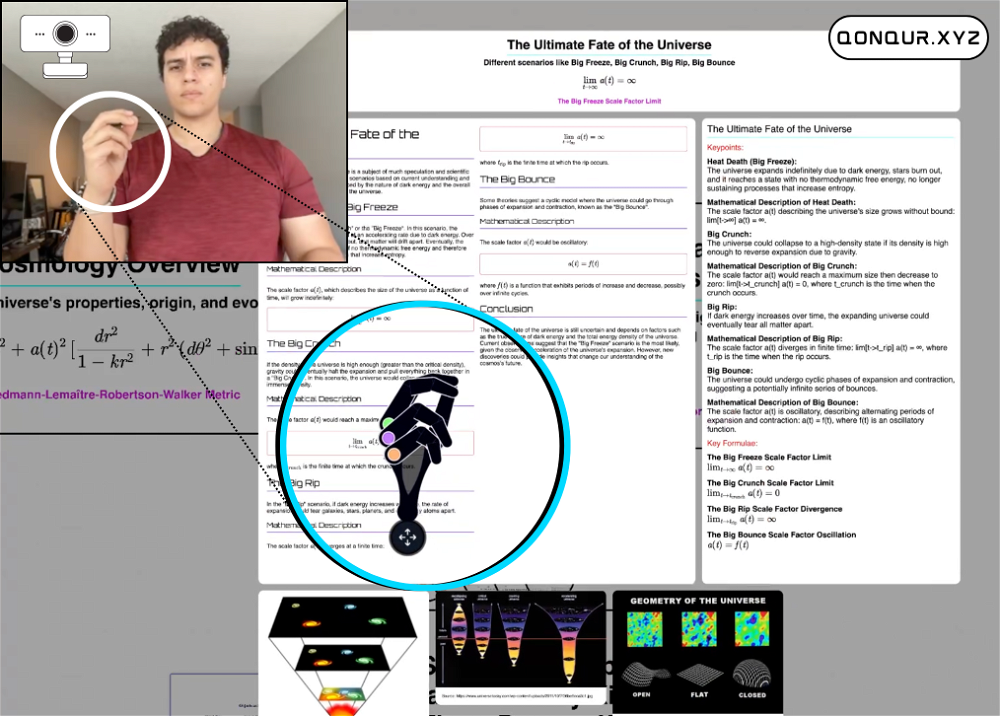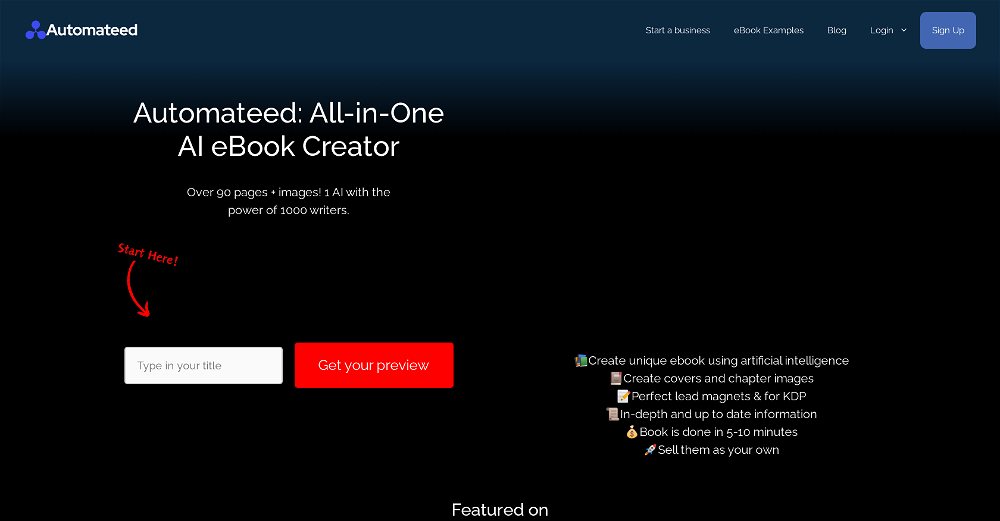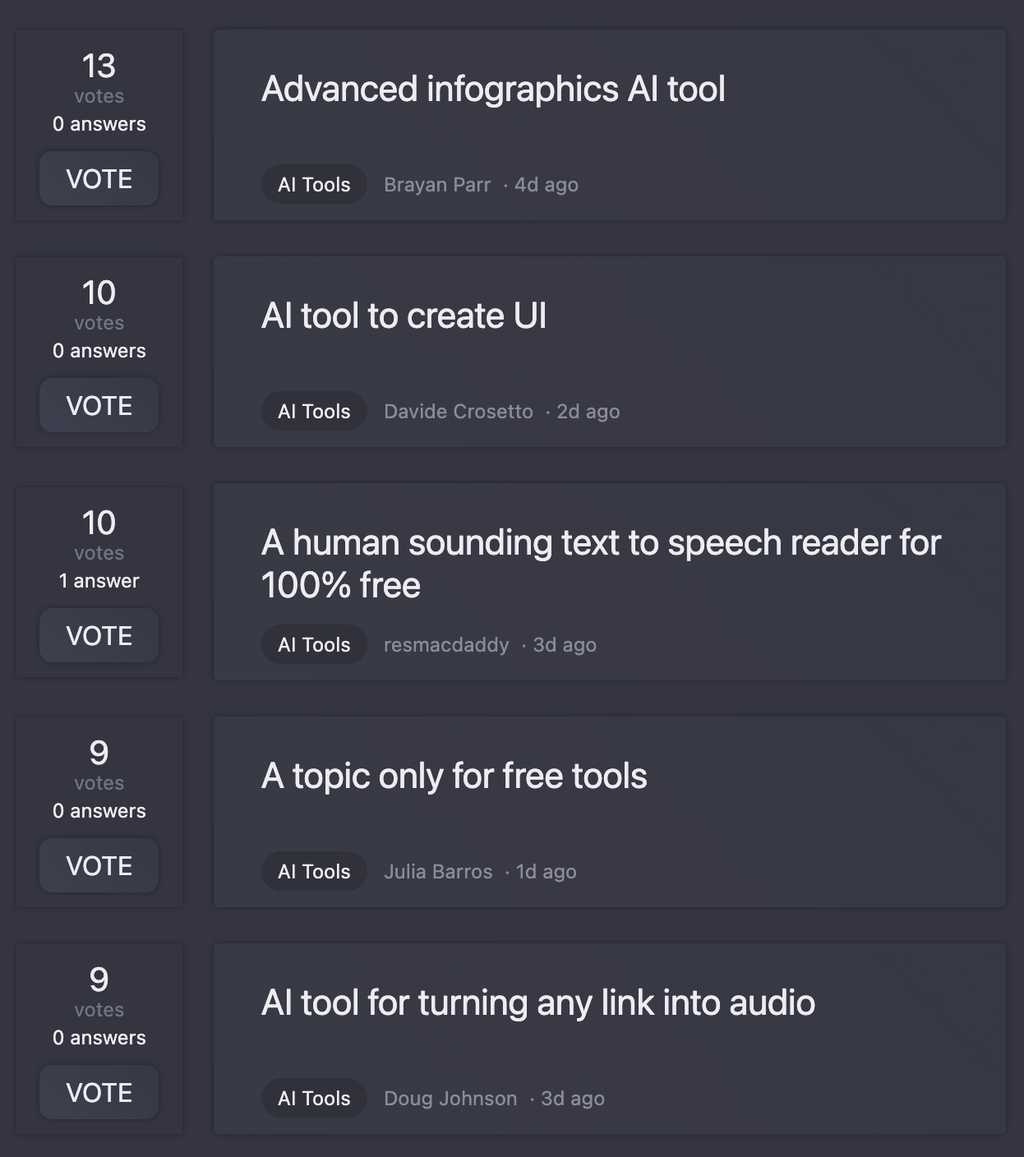▼ State of the art
Code generator
Free mode
100% free
Freemium
Free Trial
-
I'll provide a high-level design for the client compliance tracking software and a sample Python implementation. **System Design** The system will consist of the following components: 1. **Client Management**: Store client information, including name, address, and contact details. 2. **Form Management**: Store information about each form, including form name, description, and submission deadlines. 3. **Form Submissions**: Track each form submission, including the client, form, submission date, and status (pending, submitted, approved, rejected). 4. **Compliance Status**: Provide a summary of each client's compliance status, including the forms they need to submit and their current status. 5. **Deadline Reminders**: Send reminders to clients about upcoming deadlines for form submissions. 6. **Reporting**: Generate reports on compliance status, including summaries and detailed lists of form submissions. **Database Schema** The database schema will include the following tables: * **clients**: client information (id, name, address, contact details) * **forms**: form information (id, name, description, submission deadline) * **form_submissions**: form submissions (id, client_id, form_id, submission_date, status) * **compliance_status**: compliance status summary (client_id, form_id, status) **Python Implementation** I'll provide a sample implementation using Python and the Flask web framework. ```python from flask import Flask, render_template, request, redirect, url_for from flask_sqlalchemy import SQLAlchemy from datetime import datetime app = Flask(__name__) app.config["SQLALCHEMY_DATABASE_URI"] = "sqlite:///compliance.db" db = SQLAlchemy(app) class Client(db.Model): id = db.Column(db.Integer, primary_key=True) name = db.Column(db.String(100), nullable=False) address = db.Column(db.String(200), nullable=False) contact_details = db.Column(db.String(100), nullable=False) class Form(db.Model): id = db.Column(db.Integer, primary_key=True) name = db.Column(db.String(100), nullable=False) description = db.Column(db.String(200), nullable=False) submission_deadline = db.Column(db.DateTime, nullable=False) class FormSubmission(db.Model): id = db.Column(db.Integer, primary_key=True) client_id = db.Column(db.Integer, db.ForeignKey("client.id"), nullable=False) form_id = db.Column(db.Integer, db.ForeignKey("form.id"), nullable=False) submission_date = db.Column(db.DateTime, nullable=False) status = db.Column(db.String(50), nullable=False) class ComplianceStatus(db.Model): id = db.Column(db.Integer, primary_key=True) client_id = db.Column(db.Integer, db.ForeignKey("client.id"), nullable=False) form_id = db.Column(db.Integer, db.ForeignKey("form.id"), nullable=False) status = db.Column(db.String(50), nullable=False) @app.route("/") def index(): return render_template("index.html") @app.route("/clients") def clients(): clients = Client.query.all() return render_template("clients.html", clients=clients) @app.route("/forms") def forms(): forms = Form.query.all() return render_template("forms.html", forms=forms) @app.route("/form_submissions") def form_submissions(): form_submissions = FormSubmission.query.all() return render_template("form_submissions.html", form_submissions=form_submissions) @app.route("/compliance_status") def compliance_status(): compliance_status = ComplianceStatus.query.all() return render_template("compliance_status.html", compliance_status=compliance_status) if __name__ == "__main__": app.run(debug=True) ``` **Forms and Templates** Create the following templates: * `index.html`: dashboard overview * `clients.html`: client management page * `forms.html`: form management page * `form_submissions.html`: form submissions page * `compliance_status.html`: compliance status summary page **Forms List** The following forms will be included: * ROC forms: ADT-1, ADT-2, ADT-3, ADT-4, AOC-1, AOC-2, AOC-3, AOC-3A, AOC-4, AOC-5, BEN-1, BEN-2, BEN-3, BEN-4, CHG-1, CHG-4, CHG-6, CHG-8, CHG-9, CRA-1, CRA-2, CRA-3, CRA-4, CSR-1, CSR-2, DIR-10, DIR-11, DIR-12, DIR-03, DIR-03 KYC, DIR-5, DIR-06, DIR-08, DIR-09, DPT-03, FC-1, FC-2, FC-3, FC-4, IEPF-1, IEPF-2, IEPF-4, IEPF-5, INC-12, INC-18, INC-19, INC-2, INC-20, INC-20A, INC-22, INC-23, INC-24, INC-25A, INC-26, INC-27, INC-27A, INC-28, INC-29, INC-4, INC-6, INC-7, MBP-1, MGT-1, MGT-11, MGT-12, MGT-13, MGT-14, MGT-15, MGT-2, MGT-3, MGT-4, MGT-5, MGT-6, MGT-7, MGT-7A, MGT-8, MR-1, MR-2, MR-3, MSC-1, MSC-3, MSC-4, MSME-1, MSME-1, PAS-1, PAS-2, PAS-3, PAS-4, PAS-5, PAS-6, SH-1, SH-2, SH-3, SH-4, SH-5, SH-6, SH-7, SH-8, SH-9, SH-10, SH-11, SH-12, SH-13, SH-14, SH-15, SPICE Part A, SPICE Part B, STK-1, STK-2, STK-3, STK-4 * Other forms: Form-3, Form-4, Form-5, Form-8, Form-11, Form-12, Form-15, Form-22, Form-23, Form-24, Form-25, Form-27, Form-28, Form-31, Form-32, Form LLP BEN2, Form4D **Next Steps** 1. Implement user authentication and authorization. 2. Develop the client management page. 3. Develop the form management page. 4. Develop the form submissions page. 5. Develop the compliance status summary page. 6. Implement deadline reminders. 7. Implement reporting features. This is a high-level design and implementation, and there are many details that need to be addressed. However, this should provide a good starting point for building a client compliance tracking software. This high-level design and sample Python implementation provides a good starting point. However, the implementation details are not sufficient. Could you provide a more detailed implementation in Python, including the following: 1. **Models**: Define the models for Client, Form, FormSubmission, and ComplianceStatus using SQLAlchemy. 2. **Database**: Create the database tables using the models. 3. **Forms**: Define forms for client management, form submissions, and compliance status updates using Flask-WTF. 4. **Routes**: Implement routes for client management, form submissions, and compliance status updates. 5. **Templates**: Provide sample templates for each page. I'll review the detailed implementation and provide feedback. Here's a more detailed implementation: **Models** ```python from flask_sqlalchemy import SQLAlchemy from datetime import datetime db = SQLAlchemy() class Client(db.Model): id = db.Column(db.Integer, primary_key=True) name = db.Column(db.String(100), nullable=False) address = db.Column(db.String(200), nullable=False) contact_details = db.Column(db.String(100), nullable=False) def __repr__(self): return f"Client('{self.name}', '{self.address}', '{self.contact_details}')" class Form(db.Model): id = db.Column(db.Integer, primary_key=True) name = db.Column(db.String(100), nullable=False) description = db.Column(db.String(200), nullable=False) submission_deadline = db.Column(db.DateTime, nullable=False) def __repr__(self): return f"Form('{self.name}', '{self.description}', '{self.submission_deadline}')" class FormSubmission(db.Model): id = db.Column(db.Integer, primary_key=True) client_id = db.Column(db.Integer, db.ForeignKey("client.id"), nullable=False) form_id = db.Column(db.Integer, db.ForeignKey("form.id"), nullable=False) submission_date = db.Column(db.DateTime, nullable=False, default=datetime.utcnow) status = db.Column(db.String(50), nullable=False, default="pending") client = db.relationship("Client", backref=db.backref("form_submissions", lazy=True)) form = db.relationship("Form", backref=db.backref("form_submissions", lazy=True)) def __repr__(self): return f"FormSubmission('{self.client.name}', '{self.form.name}', '{self.submission_date}', '{self.status}')" class ComplianceStatus(db.Model): id = db.Column(db.Integer, primary_key=True) client_id = db.Column(db.Integer, db.ForeignKey("client.id"), nullable=False) form_id = db.Column(db.Integer, db.ForeignKey("form.id"), nullable=False) status = db.Column(db.String(50), nullable=False, default="not started") client = db.relationship("Client", backref=db.backref("compliance_status", lazy=True)) form = db.relationship("Form", backref=db.backref("compliance_status", lazy=True)) def __repr__(self): return f"ComplianceStatus('{self.client.name}', '{self.form.name}', '{self.status}')" ``` **Database** ```python with app.app_context(): db.create_all() ``` **Forms** ```python from flask_wtf import FlaskForm from wtforms import StringField, DateField, SelectField, SubmitField from wtforms.validators import DataRequired class ClientForm(FlaskForm): name = StringField("Name", validators=[DataRequired()]) address = StringField("Address", validators=[DataRequired()]) contact_details = StringField("Contact Details", validators=[DataRequired()]) submit = SubmitField("Submit") class FormSubmissionForm(FlaskForm): client_id = SelectField("Client", coerce=int) form_id = SelectField("Form", coerce=int) submission_date = DateField("Submission Date") status = SelectField("Status", choices=["pending", "submitted", "approved", "rejected"]) submit = SubmitField("Submit") class ComplianceStatusForm(FlaskForm): client_id = SelectField("Client", coerce=int) form_id = SelectField("Form", coerce=int) status = SelectField("Status", choices=["not started", "in progress", "completed"]) submit = SubmitField("Submit") ``` **Routes** ```python @app.route("/") def index(): return render_template("index.html") @app.route("/clients") def clients(): clients = Client.query.all() return render_template("clients.html", clients=clients) @app.route("/clients/new", methods=["GET", "POST"]) def new_client(): form = ClientForm() if form.validate_on_submit(): client = Client(name=form.name.data, address=form.address.data, contact_details=form.contact_details.data) db.session.add(client) db.session.commit() return redirect(url_for("clients")) return render_template("new_client.html", form=form) @app.route("/forms") def forms(): forms = Form.query.all() return render_template("forms.html", forms=forms) @app.route("/form_submissions") def form_submissions(): form_submissions = FormSubmission.query.all() return render_template("form_submissions.html", form_submissions=form_submissions) @app.route("/form_submissions/new", methods=["GET", "POST"]) def new_form_submission(): form = FormSubmissionForm() form.client_id.choices = [(client.id, client.name) for client in Client.query.all()] form.form_id.choices = [(form.id, form.name) for form in Form.query.all()] if form.validate_on_submit(): form_submission = FormSubmission(client_id=form.client_id.data, form_id=form.form_id.data, submission_date=form.submission_date.data, status=form.status.data) db.session.add(form_submission) db.session.commit() return redirect(url_for("form_submissions")) return render_template("new_form_submission.html", form=form) @app.route("/compliance_status") def compliance_status(): compliance_status = ComplianceStatus.query.all() return render_template("compliance_status.html", compliance_status=compliance_status) @app.route("/compliance_status/new", methods=["GET", "POST"]) def new_compliance_status(): form = ComplianceStatusForm() form.client_id.choices = [(client.id, client.name) for client in Client.query.all()] form.form_id.choices = [(form.id, form.name) for form in Form.query.all()] if form.validate_on_submit(): compliance_status = ComplianceStatus(client_id=form.client_id.data, form_id=form.form_id.data, status=form.status.data) db.session.add(compliance_status) db.session.commit() return redirect(url_for("compliance_status")) return render_template("new_compliance_status.html", form=form) ``` **Templates** Create the following templates: * `index.html`: dashboard overview * `clients.html`: client management page * `new_client.html`: new client page * `forms.html`: form management page * `form_submissions.html`: form submissions page * `new_form_submission.html`: new form submission page * `compliance_status.html`: compliance status summary page * `new_compliance_status.html`: new compliance status page This implementation provides a more detailed example of how the client compliance tracking software could be built using Flask and SQLAlchemy. Your implementation provides a good foundation for building the client compliance tracking software. However, I would like to add more functionality to the software, such as: 1. **User Management**: Add user management features, including user registration, login, and role-based access control. 2. **Form Automation**: Automate form submissions by integrating with external APIs or services. 3. **Notifications**: Send notifications to clients and users about upcoming deadlines, form submissions, and compliance status updates. To implement these features, I can leverage libraries like Flask-Login, Flask-Principal, and Flask-Mail. Here's an example of how you could implement user management using Flask-Login and Flask-Principal: **User Model** ```python class User(db.Model): id = db.Column(db.Integer, primary_key=True) username = db.Column(db.String(64), unique=True, nullable=False) email = db.Column(db.String(120), unique=True, nullable=False) password_hash = db.Column(db.String(128)) def set_password(self, password): self.password_hash = generate_password_hash(password) def check_password(self, password): return check_password_hash(self.password_hash, password) def __repr__(self): return f"User('{self.username}', '{self.email}')" ``` **User Registration and Login** ```python from flask_login import LoginManager, UserMixin, login_user, logout_user, login_required, current_user login_manager = LoginManager() login_manager.init_app(app) @login_manager.user_loader def load_user(user_id): return User.query.get(int(user_id)) @app.route("/register", methods=["GET", "POST"]) def register(): form = RegistrationForm() if form.validate_on_submit(): user = User(username=form.username.data, email=form.email.data) user.set_password(form.password.data) db.session.add(user) db.session.commit() return redirect(url_for("login")) return render_template("register.html", form=form) @app.route("/login", methods=["GET", "POST"]) def login(): form = LoginForm() if form.validate_on_submit(): user = User.query.filter_by(username=form.username.data).first() if user and user.check_password(form.password.data): login_user(user) return redirect(url_for("index")) return render_template("login.html", form=form) @app.route("/logout") @login_required def logout(): logout_user() return redirect(url_for("index")) ``` **Role-Based Access Control** ```python from flask_principal import Principal, Permission, RoleNeed principals = Principal(app) admin_permission = Permission(RoleNeed("admin")) moderator_permission = Permission(RoleNeed("moderator")) @app.route("/admin") @admin_permission.require(http_exception=403) def admin(): return "Admin page" @app.route("/moderator") @moderator_permission.require(http_exception=403) def moderator(): return "Moderator page" ``` **Notifications** ```python from flask_mail import Mail, Message mail = Mail(app) def send_notification(subject, recipients, body): msg = Message(subject, recipients=recipients, body=body) mail.send(msg) @app.route("/send_notification", methods=["POST"]) def send_notification_route(): subject = request.form["subject"] recipients = request.form["recipients"] body = request.form["body"] send_notification(subject, recipients, body) return "Notification sent" ``` Please let me know if this implementation meets your requirements or if you need further modifications.
-
Here is an example of HTML code for a simple login form: ``` <!DOCTYPE html> <html> <head> <title>Login Form</title> <style> body { font-family: Arial, sans-serif; } .container { width: 300px; background-color: #f9f9f9; padding: 20px; border: 1px solid #ccc; border-radius: 5px; box-shadow: 0 0 10px rgba(0, 0, 0, 0.1); } </style> </head> <body> <div class="container"> <h2>Login Form</h2> <form> <label for="username">Username:</label> <input type="text" id="username" name="username"><br><br> <label for="password">Password:</label> <input type="password" id="password" name="password"><br><br> <input type="submit" value="Login"> </form> </div> </body> </html> ``` This code creates a basic login form with a username and password input, and a submit button. Note that this code does not include any server-side validation or authentication, it's just a basic HTML form. If you want to add functionality to this form, you will need to add JavaScript code to handle the form submission and validate the input data. You will also need to create a server-side script to handle the form data and authenticate the user. Let me know if you need any further assistance or if you have any specific requirements for the login form.
-
```html <!DOCTYPE html> <html lang="en"> <head> <meta charset="UTF-8"> <meta name="viewport" content="width=device-width, initial-scale=1.0"> <title>Minimal Digital Clock</title> <style> body { font-family: Arial, sans-serif; display: flex; justify-content: center; align-items: center; height: 100vh; margin: 0; background-color: #f0f0f0; } .clock-container { background-color: #fff; border-radius: 10px; padding: 20px; box-shadow: 0 0 10px rgba(0,0,0,0.1); } #clock { font-size: 3rem; font-weight: bold; text-align: center; margin-bottom: 10px; } select { width: 100%; padding: 5px; margin-bottom: 10px; } label { display: flex; align-items: center; justify-content: center; margin-bottom: 10px; } </style> </head> <body> <div class="clock-container"> <div id="clock"></div> <select id="timezone"> <!-- Time zones will be populated dynamically --> </select> <label> <input type="checkbox" id="format-toggle"> 24-hour format </label> </div> <script> const clock = document.getElementById('clock'); const timezoneSelect = document.getElementById('timezone'); const formatToggle = document.getElementById('format-toggle'); // Populate time zone options moment.tz.names().forEach(tz => { const option = document.createElement('option'); option.value = tz; option.textContent = tz; timezoneSelect.appendChild(option); }); function updateClock() { const selectedTimezone = timezoneSelect.value; const use24HourFormat = formatToggle.checked; const now = moment().tz(selectedTimezone); const format = use24HourFormat ? 'HH:mm:ss' : 'hh:mm:ss A'; clock.textContent = now.format(format); } // Update clock every second setInterval(updateClock, 1000); // Update clock when time zone or format changes timezoneSelect.addEventListener('change', updateClock); formatToggle.addEventListener('change', updateClock); // Initial clock update updateClock(); </script> <script src="https://cdnjs.cloudflare.com/ajax/libs/moment.js/2.29.1/moment.min.js"></script> <script src="https://cdnjs.cloudflare.com/ajax/libs/moment-timezone/0.5.33/moment-timezone-with-data.min.js"></script> </body> </html> ``` This code creates a minimal digital clock with the following features: 1. Displays time in 12-hour or 24-hour format 2. Allows selection of any time zone 3. Updates in real-time 4. Has a clean, modern design Key points: - Uses HTML, CSS, and JavaScript for implementation - Utilizes the Moment.js library for handling time zones and formatting - Responsive design that works on various screen sizes - Easy to customize colors and styles To use this code, save it as an HTML file and open it in a web browser. Make sure you have an active internet connection for the Moment.js library to load properly.
-
### Even Number Filter Function #### Function Description The following Python function filters a list of integers and returns a new list containing only the even numbers. #### Code ```python def filter_even_numbers(numbers): """ This function takes a list of integers and returns a new list containing only the even numbers. Args: numbers (list): A list of integers. Returns: list: A list of even integers. """ # Using list comprehension to create a new list with only even numbers # The 'if' condition inside the list comprehension checks if a number is even (i.e., remainder when divided by 2 is 0) even_numbers = [num for num in numbers if num % 2 == 0] # Return the list of even numbers return even_numbers # Example usage if __name__ == "__main__": numbers_list = [1, 2, 3, 4, 5, 6, 7, 8, 9, 10] print("Original List:", numbers_list) print("Even Numbers:", filter_even_numbers(numbers_list)) ``` #### Explanation - The function `filter_even_numbers` takes one argument: `numbers`, which is expected to be a list of integers. - Inside the function, a list comprehension is used to iterate over each number (`num`) in the input list (`numbers`). - The `if` condition `num % 2 == 0` filters out odd numbers, only including numbers that are divisible by 2 (i.e., even numbers) in the new list. - The resulting list of even numbers is then returned by the function. #### Important Considerations - This function assumes that the input will be a list. If the input might be something else, you should add error checking code to handle that. - The function uses list comprehension for conciseness and efficiency. For very large lists, this approach is memory-efficient because it avoids the need to append to a list in a loop.Dua Batool🙏 1 karmaSep 24, 2025@Code Generatoruser friendly and gaves accurate results so for me its 10/10 tool
Other tools
-
-
 This team took the time to understand the industry, problem and its users and designed a perfectly engineered solution. Kudos.
This team took the time to understand the industry, problem and its users and designed a perfectly engineered solution. Kudos. -
 Useful to quickly explore the content of and interconnections between research papers. Makes it a more fun process.
Useful to quickly explore the content of and interconnections between research papers. Makes it a more fun process. -
Open
 This tool i found is super cool, I created 5 books from this tool to sell them online, which gives me great profit. I am creating more valuable books to spread knowledge, and earn some bucks as well 🤑.
This tool i found is super cool, I created 5 books from this tool to sell them online, which gives me great profit. I am creating more valuable books to spread knowledge, and earn some bucks as well 🤑. - Spotlight: CodeRabbit (Code reviews)
-
 It's great, I built it and use it daily :)
It's great, I built it and use it daily :) -
 Very cool app! Build was fast as, and with a few tweaks I fully launched my website in 1 hour!
Very cool app! Build was fast as, and with a few tweaks I fully launched my website in 1 hour! -
I've been playing around with this for a few hours. It's made me say "WOW" too many times than i wish to admit. I'm going to follow this and see how it evolves. For now, i managed to create quite a nice Expenses app for personal use. | It did have some problems when it came to moving some components on other pages, but for how short the prompts it uses can be, it is really impressive. With some proper prompts it can generate some strong stuff.
-
Just type what you need — AI fills Sheets™, Docs™, and Slides™OpenJust type what you need — AI fills Sheets™, Docs™, and Slides™. FREE Forever with your API key for up to 100 execution per month! Zero formula typing, natural language instructions, zero complexity. Fill spreadsheets, create and edit documents, generate slide presentations, create images, and more.
-
Its a really great code generator, it helped me with lots of codes for lots of programming languages, it gives short answers, explain the code and gives you versions of the code if asked
-
 Boost your creativity with AI-powered brainstorming.OpenI can't explain how impressed i am by this. I've seen tools to help you brainstorm ideas, but not one to break your task down into big steps, then little steps for each of these. Plus "games" to help come up with more ideas for your project. I'm excited to use this!
Boost your creativity with AI-powered brainstorming.OpenI can't explain how impressed i am by this. I've seen tools to help you brainstorm ideas, but not one to break your task down into big steps, then little steps for each of these. Plus "games" to help come up with more ideas for your project. I'm excited to use this! -
Great tool for simplifying product requirement tasks. Smooth Jira integration, some AI-generated content might need tweaking. If you’re looking to streamline your process without spending much, it’s definitely worth a try!
- Didn't find the AI you were looking for?
-
-
Would rate 4.9 if possible, but rounding up to 5 stars because this app truly excels compared to other AI coding tools. Why 5 Stars: Best-in-class AI coding assistance Huge improvements over competitors Actually works for real development Real Impact: I successfully built and published an actual app using this tool - that's game-changing for non-developers like me. Bottom Line: Yes, there's room for improvement, but this is already the top AI coding app available. The fact that ordinary people can create real apps with it says everything. Perfect for anyone wanting to turn ideas into actual apps!
-
No free option all models are behind a pay wall.
-
Have been trial running this tool and am very impressed by what I've seen. Would recommend for persons in need of a reliable, cost-effective and SEO optimized writing solution.
-
-
Stakly helped me launch my app super fast. Really impressed with how easy it was to use.
-
Much more in-depth and relevant outputs from my existing chatGPT from the first interaction.
-
 Redesign And Build websites, docs, and blogs with AI in minutesOpenusefull for intial landing page design
Redesign And Build websites, docs, and blogs with AI in minutesOpenusefull for intial landing page design -
AI code assistant that accelerates development while ensuring privacy.Open
-
Open
-
-
This is truly a wonderful experience that brings joy and delight.
-
I use Devra for every project -- I've created 5 new projects this year with it
-
Validate ideas, name your business, create logos, and build websites in minutesOpenIt helped me set up my online business within minutes.
-
-
This is a fantastic tool for creating a bespoke chatbot that understands the nuances of your business. It's so easy to set up, works with all the platforms I use, like Slack, Google Drive, Notion, and Zapier, and it's massively helped with customer service queries. Would definitely recommend.
-
Currently using it for handling basic FAQs and simple actions and it's doing the job. The no code part makes everything straightforward. Replies are fast and natural. Nice tool option if you're looking to simply add a chatbot without dealing with the complex stuff.
-
Thank you Mayank for your support! 🙏 We're committed to helping as many job seekers as possible succeed in their interviews. Your encouragement motivates us to keep improving Acedit.ai! 💫
-
Hi Marwa — thank you for the love on your first try and for the candid update. We’re sorry about the frustration with verification and downloads — that’s on us. A quick update based on your feedback: • We’ve removed the human‑verification step entirely. It was only in place during our early launch (before login) to prevent abuse; now that sign‑in is live, it’s no longer needed. • The free plan currently includes 2 song generations per day plus unlimited listening/streaming. (Downloads are available on paid plans.) AI music generation is expensive to run, so we can’t make unlimited usage completely free, but we’re committed to keeping a useful free tier and transparent pricing. If you decide to upgrade, use the code TAAFT at checkout for 20% off any plan. If anything still doesn’t work as expected, please email us at [email protected] — we’ll jump on it. Thanks again for helping us make Eleven Music better!
-
Excellent for my kids and keeps getting better!
-
-
I like this. Helped me a lot in dark times. I have elevated anxiety and overthinking but this piece of software comea in handy when I need help. Also it’s affordable so kudos to the team 🤝🏻🤝🏻
-
-
Definitely the best AI resume tailoring I've used so far. Easy to use, without the typical bloat, and the results were actually impressive.
-
I'm a developer and Code Genius is my pair programming, it's amazing how much time it already saved me. Especially when it comes to unit tests (Jest and React Testing Library) 💯 Recommended!
-
 Transform your codebase into comprehensive, beautiful documentation automatically.Open
Transform your codebase into comprehensive, beautiful documentation automatically.Open -
-
OpenI built Remy to solve a problem I face every day: Newsletter overload 📬 Remy is your personal AI assistant that summarizes all your newsletters into a single digest email. Go from a cluttered inbox to a clear, concise briefing in one go.
-
 SCORM-compliant, Interactive course builder, personalized learning, tools instructional designers, Teacher toolsOpenI’ve been using Mexty for a few weeks now and it honestly makes lesson creation so much easier. The interface is clean, and I can build interactive content in minutes without needing to code. It’s been super helpful for saving time and still getting professional results.
SCORM-compliant, Interactive course builder, personalized learning, tools instructional designers, Teacher toolsOpenI’ve been using Mexty for a few weeks now and it honestly makes lesson creation so much easier. The interface is clean, and I can build interactive content in minutes without needing to code. It’s been super helpful for saving time and still getting professional results. -
-
Hey TAAFT 👋 I'm Vincent, the founder of BlogSEO. I created BlogSEO with one goal in mind: automating SEO for busy entrepreneurs. As a multiple-time founder myself, I never had the time to take care of SEO for my past projects. I knew SEO was one of the most efficient acquisition channel, but I just couldn't spend time creating content and setting up a blog for my projects. I was busy building the features, answering customers and running the business. That's why I created BlogSEO. For ambitious builders and business owners that know the power of ranking on Google and getting cited by ChatGPT to get leads, but don't have the time to take care of it. BlogSEO fully automates your SEO strategy: you just need to put your website URL, connect it in a few clicks and fresh SEO-friendly content will start appearing on your website daily. BlogSEO was designed to really work for you and not the other way around, that's why it works out of the box with 0 setup and is fully automated by default. But if you prefer to have more control over your content, you're able to do so by customizing keywords, targeting competitors and review the SEO content before it's published. I hope this tool will help you as much as it helps me getting organic traffic on my websites! Keep Scaling 🚀! Vincent
-
-
the founder is cool, definitely a recommendation if you have personal requests and grow the app along with you.
-
I use it for a few years now, for me it´s a great "all-in-one" tool especially if you like to build apps. Build-in AI is also great and at all the price is fair. no-Coder.io
-
Hi! I'm Regitze, founder of Digibate - your AI-powered marketing assistant built especially for small businesses and solopreneurs. We help you create, schedule, and publish content effortlessly across platforms, including product photoshoots, social posts, newsletters, and more. We're constantly working on improving Digibate, and your feedback means the world to us. If you have any thoughts, ideas, or wishes for future features, please don’t hesitate to share - we’d love to hear from you! 💡
-
I was able to produce some really stunning QR codes that consistently scan on my phone and it's the easiest tool I've found that makes it simple to do this without needing to worry about the AI behind it.
-
as a published author who has navigated the turbulent waters of manuscript development across multiple projects, I can say with complete conviction that WriteabookAI represents a paradigm shift in how we approach the structural and technical aspects of book creation. When I began work on MANtality: "Applying Ancient Wisdom to Unleash the Modern Masculine Psyche", I found myself in familiar territory—brimming with ideas, research, and passion, yet facing the daunting task of transforming raw content into a professionally formatted, structurally sound manuscript. This is where WriteabookAI became not just useful, but indispensable. Let me be crystal clear: this platform did not write my book. What it did was far more valuable—it served as a tireless, intuitive editor and formatter that elevated my existing work to professional publishing standards. The distinction matters enormously. WriteabookAI respects the author's voice and vision while providing the structural scaffolding that transforms good writing into a polished, marketable product. The platform's ease of use is nothing short of remarkable. Within minutes of uploading my manuscript, I was navigating an interface so intuitive that it felt like a natural extension of my creative process. The formatting tools are sophisticated yet accessible, allowing me to focus on refining my message about masculine psychology and ancient wisdom rather than wrestling with technical specifications. Chapter organization, heading hierarchies, pagination, and style consistency—elements that typically consume hours of tedious work—were streamlined into simple, elegant processes. What truly sets WriteabookAI apart is its ability to help authors see their work with fresh eyes. As I structured the complex concepts in MANtality, the platform's organizational tools revealed patterns and opportunities for improvement I hadn't recognized. It functioned as that invaluable second pair of eyes every author needs, highlighting where transitions could be smoother, where chapter breaks might serve the reader better, and where formatting choices could enhance readability without compromising artistic intent. The formatting capabilities deserve special mention. Whether adjusting margins, establishing consistent styling for quotes and callouts, or ensuring proper front and back matter organization, WriteabookAI handled every technical requirement with precision. For a non-fiction work like mine—which incorporates philosophical concepts, practical applications, and research citations—this level of formatting control was essential. Yet I have no doubt fiction authors would find equal value in the platform's versatility. I must express my profound gratitude to Marvin, whose vision in creating WriteabookAI has clearly been shaped by a deep understanding of what authors need. This isn't bloatware masquerading as innovation; it's a purpose-built tool created by someone who genuinely understands the author's journey. Marvin has given the writing community a gift that saves countless hours while elevating the final product. My recommendation to fellow authors—whether you're crafting intricate fiction worlds or distilling complex non-fiction concepts—is unequivocal: explore WriteabookAI. This platform respects your role as the creator while providing professional-grade support that was once accessible only through expensive publishing services. It bridges the gap between raw manuscript and publication-ready work with remarkable efficiency and elegance. In an industry where authors increasingly bear responsibility for technical aspects once handled by traditional publishers, WriteabookAI is more than a convenience—it's a competitive advantage. My book is stronger, more professional, and more reader-friendly because of this platform. Yours will be too. With deepest appreciation and strongest endorsement, Scott D. Bruneau. A Fellow Author in Your Corner
-
Turn everyday items into enriching learning experiences.Opentried this tool and while it wants you to sign up at some point, it does provide some good options whenever you run out of ideas, definitely recommend it
-
I need to create a relationship between the Excel that contains the phone numbers in column A for the people to whom I want to send their performance sheet via WhatsApp every month with the click of a button automatically and without any intervention from me, knowing that the performance sheet is an image in column C and each person has his own sheet where the only link between the performance sheet and the phone number is their personal names
-
Hey this is Scott, I'm the creator of Brice. In my last job, I wanted an assistant to handle my calendar and scheduling but could never really justify hiring one. I built Brice to help business owners and busy people who need their own assistant. I hope you like it!
-
Like copilot, but for power users. Nice for my n8n workflows command center
-
Chain AI tasks with no-code into workflows for chatbots, video, documents, andOpenThis tool removes all of the prep work of getting an LLM API endpoint running. I can try out ideas quickly and see within minutes whether an endpoint concept actually works. And when it does, moving it into a production app is about as easy as it gets.
-
I was part of the beta trials and TidyDocs has made it so much easier to manage my receipts and invoices.
-
Just tried yesterday. The first productivity tool which allowed me to create professional slides, reports, and sheets with my data in a few minutes. Was able to connect 20 of my tools in less than 5 minutes.
-
Thanks for the feedback! Would love to hear what you’d like to see next
-
Great tool for engaging customers and repurposing content! I also made a video on it https://youtu.be/cIEUz3bxPRc
-
-
Hello everyone, As a AI power user, I constantly faced the multi-tab scramble and the uncertainty of getting truly reliable answers from various AI tools. That frustration led me to build Singulairity AI. My goal was simple: to create a unified, intelligent, and trustworthy platform where you can access leading AI models with unprecedented clarity and efficiency. I poured my efforts into features like Intelligent Auto-Routing, Side-by-Side Response Comparison, and the innovative Truth Mode to give you the confidence I always sought. I truly hope Singulairity AI enhances your workflow. Please review the tool and share your invaluable feedback; it's essential for Singulairity's continued evolution.
-
AgentFuel.bot auto-generates social media content specifically for the real estate industry, has a document chat tool and the road map is super strong. If you are a commercial or residential real estate agent, mortgage loan officer or in title, anywhere in the world this tool is worth a look.
-
 OpenGreat tool! Found me super niche influencers pretty quickly!
OpenGreat tool! Found me super niche influencers pretty quickly! -
not working when i click Create a new project its just loading for half an hour
-
 Open
Open -
We're live folks! Do check us out and drop your feedback or requests.
-
AI-powered code reviews that accelerate pull requests and improve code qualityOpenI signed up for early access and have been using codoki for a few months now, eventually brought it into my team as well. Great tool, simple to use, not overwhelming and has caught things in a way thats actually digestible
-
Open
-
Honestly, great job! I had tested Lyter some time ago, and I’m really impressed by the improvements. The tool is much more fluid and intuitive now. Congrats to the whole team 👏
-
 Build customized Proof-of-Concepts (POCs) and full applications in hours - not weeks.Open
Build customized Proof-of-Concepts (POCs) and full applications in hours - not weeks.Open -
Great tool! And totally free! Directly from haven
-
I use Olostep to gather data from millions of e-commerce pages for my AI shopping assistant service and it's the most cost-effective and reliable product on the market
-
👋 Hey, I'm the founder of Flowova! We built this because we were tired of spending hours dragging boxes in traditional flowchart tools. A few things you might not know: - Works with anything — text, images, PDFs, Word, PPT, Excel, even photos of whiteboard sketches - 40+ themes designed for presentations - Full Mermaid code support for developers Happy to answer any questions! 🚀
-
LLM-driven security review and fixes, seamlessly integrated into your GitHub pull requests.Open
-
Hi, I am Kingsley, the co-founder of VoicePod AI voice automation solution for businesses. We developed this solution to help business owners streamline lead prospecting, qualification and follow-up, appointment scheduling, customer care support and more using intelligent voice assistants for inbound and outbound calls featuring multi-lingual and custom voices with deep integration into existing CRM and workflow. Please, do leave your review or support requests and we would be in touch. Thank you.
-
Generate code snippets, functions, and components with AI assistance.OpenGreat tool for helping with coding tasks.
-
AI agent for Jupyter: Generate code, run cells with natural language.Open
-
-
SmartTalk is an amazing tool. For now, I’m using the free plan and it’s already doing the job. I’m looking forward to the upcoming features, like broadcasting, to switch to the paid plan.
-
I successfully used this app for creating 50k+ LOC commertial projects. It shifts development effort to more thinking in advance and system design. And then straightforward implementation. Are we at the time of making Waterfall methodology great(er) again?
-
 Never miss another customer with 24/7 AI Voice Assistants. No code setup.Open
Never miss another customer with 24/7 AI Voice Assistants. No code setup.Open -
Cool tool. I hope you continue to develop this tool to reach its full potential. Keep it up
-
 AI-powered code generator for efficient development.OpenIf you just started using python or coding this could help you a lot! I remember first time searching for a string of code and... it wasnt the most easy task at all.
AI-powered code generator for efficient development.OpenIf you just started using python or coding this could help you a lot! I remember first time searching for a string of code and... it wasnt the most easy task at all. -
Open
-
 Open
Open -
Thank you for the answers and solutions.
-
 AI code assistant: Analyze, explain, and optimize snippets instantly.Open
AI code assistant: Analyze, explain, and optimize snippets instantly.Open -
 Open
Open -
 OpenFun and easy to use. You need to fix some lines by yourself but most of code will write for you!
OpenFun and easy to use. You need to fix some lines by yourself but most of code will write for you! -
This tool took a lot of trial and error to get the vibe I was hoping for, and I'm impressed with it so far. Hopefully people get a kick out of it.
-
AI documentation that stays fresh and reduces support tickets.Open
-
ooo spooky!!! this will come in very handy now that spooky season is approaching, great
-
Create and share Mermaid diagrams instantly in your browser
-
Web Development and App Building Services Overview As a skilled developer, I can assist with creating websites and building mobile applications. I can also generate code to help with programming tasks. Web Development Services Mobile App Development Services Cross-Platform Mobile Apps: I can also develop cross-platform mobile apps using frameworks like React Native, Flutter, or Xamarin. Mobile App Design: I can create user-friendly and intuitive mobile app designs that meet your specific needs. Programming Services Code Generation: I can generate code snippets in various programming languages, including Python, Java, JavaScript, and C . Programming Language Support: I can assist with programming tasks in a variety of languages, including but not limited to: Bug Fixing and Debugging: I can help identify and fix errors in your code. Example Code Generation Here's an example of a simple "Hello, World!" program in Python: def main(): print("Hello, World!") if __name__ == "__main__": main() Or a simple JavaScript function to add two numbers: function addNumbers(a, b) { return a b; } console.log(addNumbers(2, 3)); // Output: 5 Let me know if you have a specific project in mind, and I'll be happy to assist you. I can create websites, build apps and generate codes
-
 Open
Open -
 Open
Open -
 AI-powered Web3 dev mentor for full-stack mastery.Open
AI-powered Web3 dev mentor for full-stack mastery.Open -
 Create unique art toys with AI in seconds.Open
Create unique art toys with AI in seconds.Open -
 Transform programming ideas into crystal-clear pseudocode instantly.Open
Transform programming ideas into crystal-clear pseudocode instantly.Open -
 Instantly generates clean, optimized Node.js code from your specifications.Open
Instantly generates clean, optimized Node.js code from your specifications.Open -
 Transform complex programming problems into crystal-clear pseudocode.Open
Transform complex programming problems into crystal-clear pseudocode.Open -
 Optimize AV codecs for peak streaming performance.Open
Optimize AV codecs for peak streaming performance.Open -
 AI that creates cinematic images with exact facial precision.Open
AI that creates cinematic images with exact facial precision.Open
Post

























